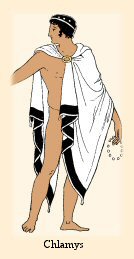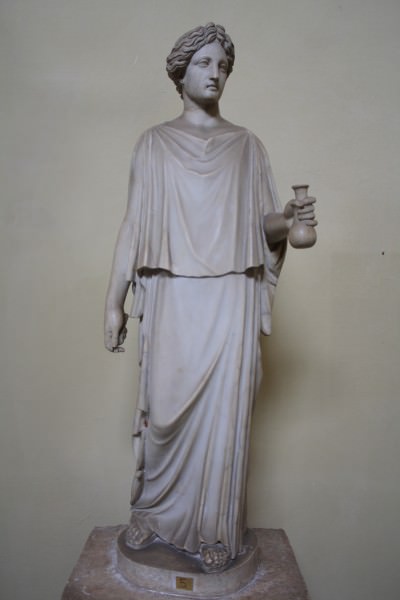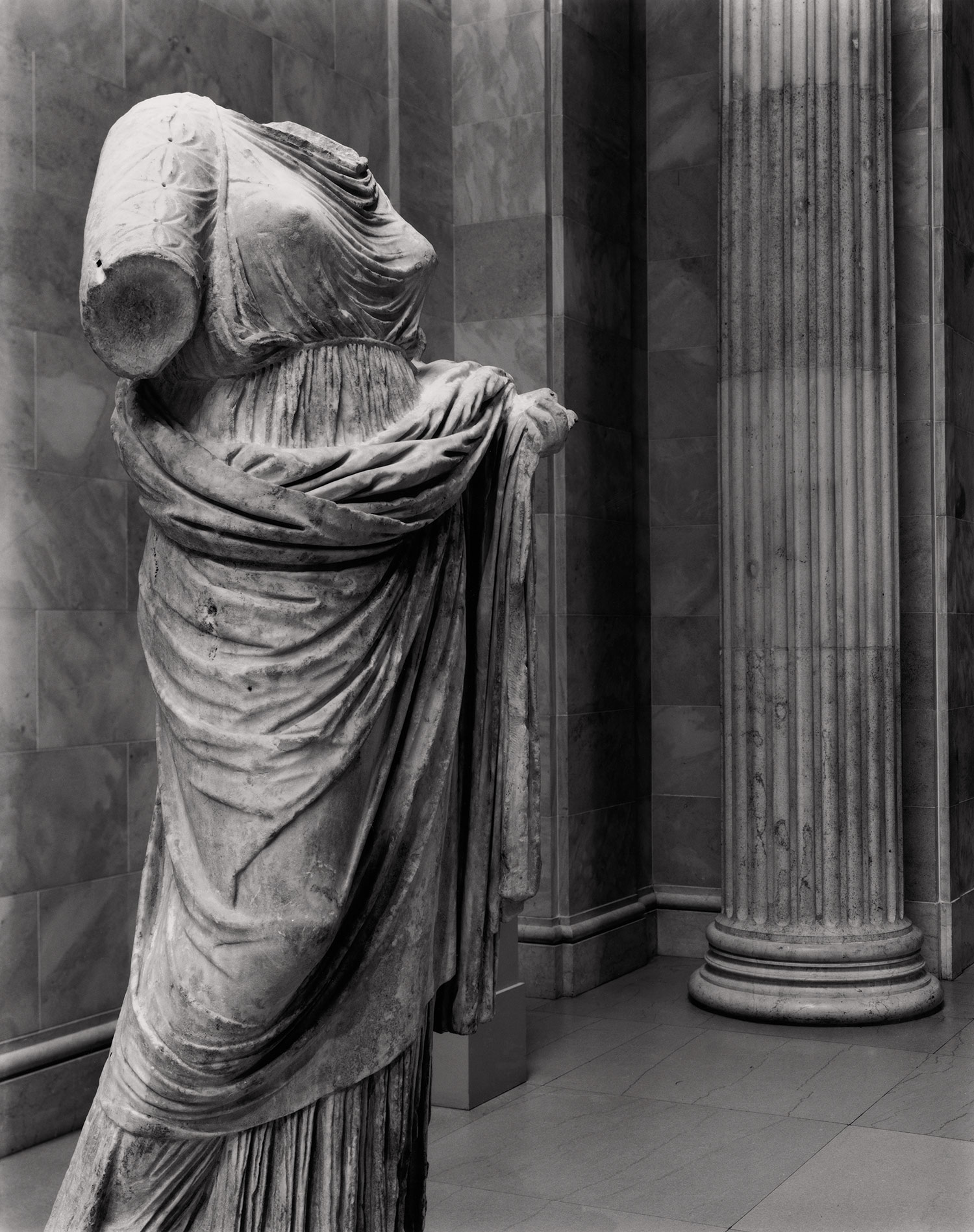Greek
800BC – 600AD
The Greek fashion had not changed until Alexander the Great took control of Jerusalem in 333 B.C. “The Ancient Greeks were not fussy about their clothing. The garments they wore were made for function, and they were made simply.” (writer873, 2012). But clothing also became a way to determine whether someone was of lower or higher class.There were four key style features in the Greek fashion: chiton, himation, chlamys and the peplos.
The chiton was a rectangle piece of fabric made from wool or linen and would be kept in place with brooches or pins at the shoulders. It could be belted at the waist by a belt or cord but could be worn with a breastplate on top instead. The chiton was worn at knee length by men and full length by women and was later developed to have sleeves.
The himation was a rectangle piece of fabric made from wool which would be draped around the body. It was worn by both men and women and was often worn over the chiton. But by the mid fifth century B.C., young men chose not to wear the chiton anymore and only wore a himation or chlamys. The chlamys was a lightweight short cloak pinned together only over one shoulder and was worn by men in the warmer months.
 |
| Drawing of chlamys |
Lastly, the peplos was the female version of the chlamys but full length. The peplos was a wool rectangle, which would have been home spun. It was folded around the body and fastened at the shoulders with pins. It later became more popular to wear as an over garment, mostly worn over the chiton.
 |
| Statue wearing a peplos |
Clothing was also a way to determine different classes in the Greek society. While the higher classes could dye their fabrics vibrant colours the lower class would use natural resources to dye their fabrics neutral colours.
 |
| The Lidija Kolovrat Spring/Summer 2014 Collection |
Modern outfit inspired by this era:
This outfit was in the Lidija Kolovrat 2014 Spring/Summer runway show. It was showcased during ModaLisboa fashion week in Portugal and demonstrated draped garments with unique prints. I picked this particular outfit as I thought it was very much like a chiton but modernised. Most of the designs in this collection were draped in different ways with bold prints. This design in particular seems more flowy because it looks to be made from linen or a thin breathable fabric which mirrors the characteristics of a chiton. It is also knee length which was how men would wear their chitons. The outfit also looks as though it is wrapped around the body and pined or sewed together around one shoulder (this feature could derive from a chlamys) and it seems as though they moved the belting that a chiton would have around the waist, to over the shoulder. Therefore this outfit has many aspects to it which derive from Greek fashion inspiration. Even though the designer never states they got their inspiration from Greek fashion I believe her designs are a modernised version of the chiton and other main styles from Greek fashion.References:
writer873. (2012, January 18). Ancient Greek Clothing. In Ancient History Encyclopedia. Retrieved August 9, 2014, from http://www.ancient.eu/article/20/
Sculpturally Draped Runways (2013, October 13). In Trend Hunter Fashion. Retrieved August 9, 2014, from http://www.trendhunter.com/trends/lidija-kolovrat-springsummer-2014
Ancient Greek Dress (n.d.). In The Metropolitan Museum of Art. Retrieved August 9, 2014, from http://www.metmuseum.org/toah/hd/grdr/hd_grdr.htm


wauw het ziet er heel goed uit. heb je de volgende link bezocht ..? zo niet, open dan de link en geniet van 25% korting en gratis en snelle verzending. https://www.thedarkattitude.com/
ReplyDeleteShop special Gothic Clothing for Women & Men at reasonable costs. Our assortment is handpicked from the best elective stores from around the world. We transport around the world.
ReplyDelete